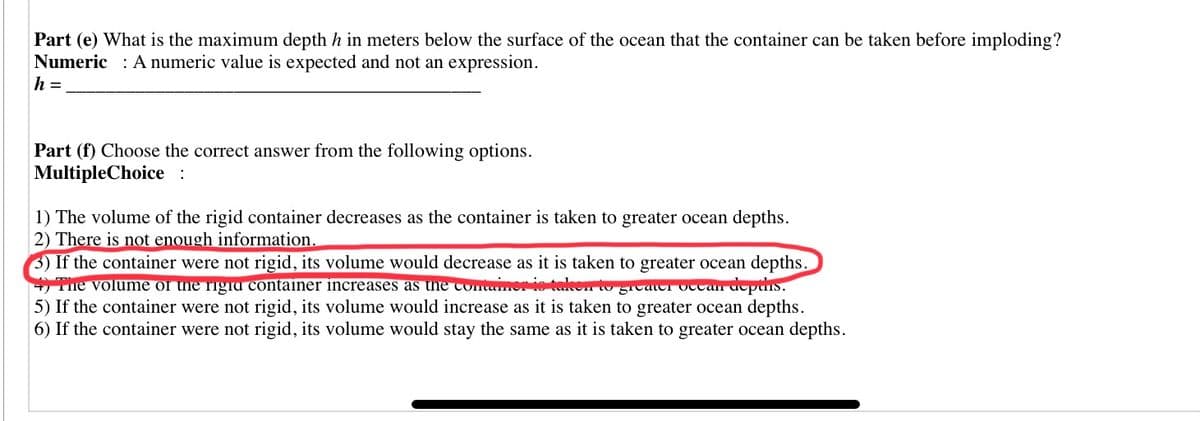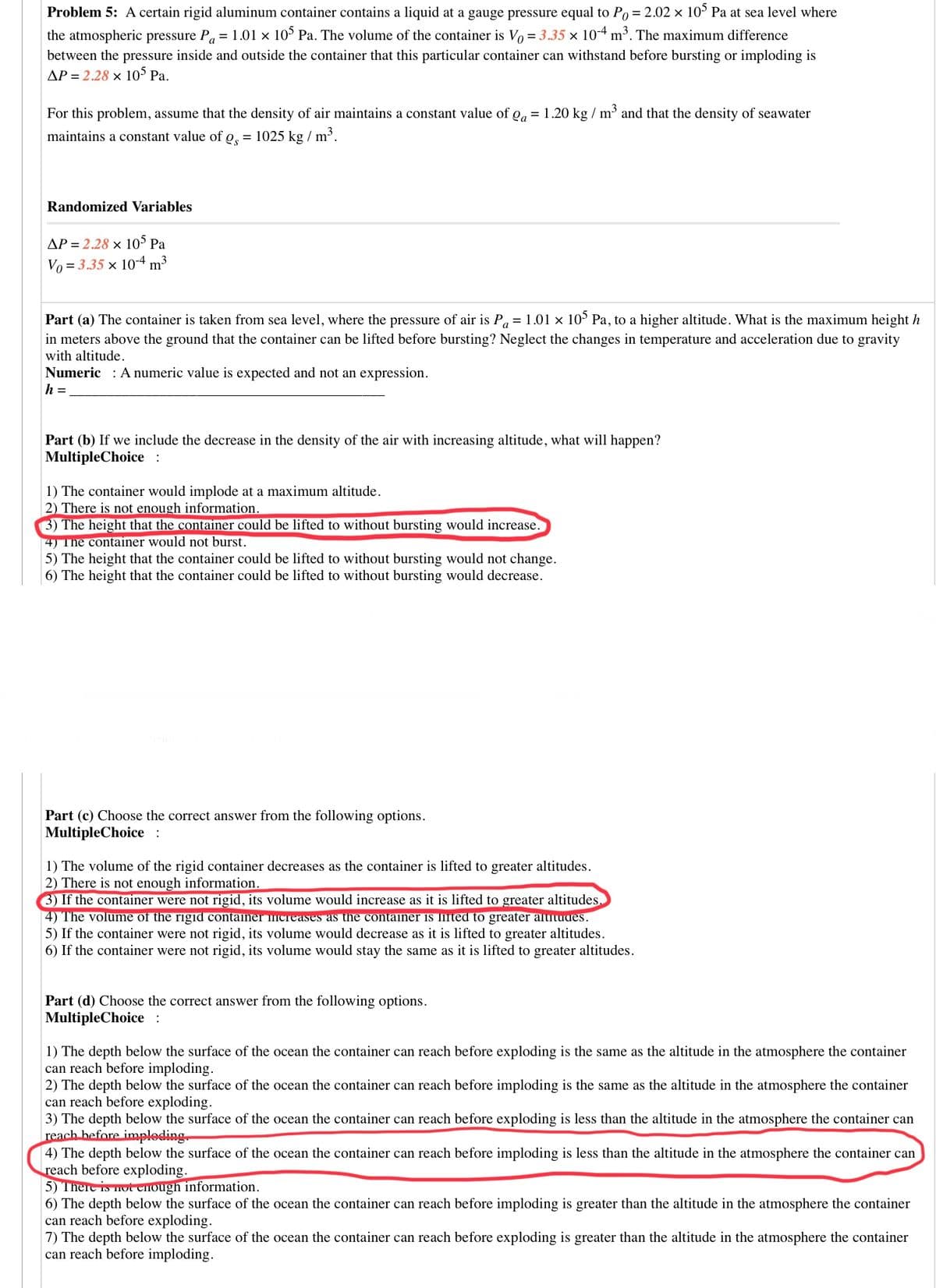Problem 5: A certain rigid aluminum container contains a liquid at a gauge pressure equal to Po = 2.02 x 10° Pa at sea level where the atmospheric pressure P 1.01 x 10° Pa. The volume of the container is Vo = 3.35 x 104 m³. The maximum difference between the pressure inside and outside the container that this particular container can withstand before bursting or imploding is AP = 2.28 x 105 Pa. For this problem, assume that the density of air maintains a constant value of o, = 1.20 kg / m and that the density of seawater maintains a constant value of o, = 1025 kg / m³. Randomized Variables AP = 2.28 x 105 Pa Vo = 3.35 x 10-4 m³ Part (a) The container is taken from sea level, where the pressure of air is P = 1.01 x 10 Pa, to a higher altitude. What is the maximum height h in meters above the ground that the container can be lifted before bursting? Neglect the changes in temperature and acceleration due to gravity with altitude. Numeric A numeric value is expected and not an expression. h =
Fluid Pressure
The term fluid pressure is coined as, the measurement of the force per unit area of a given surface of a closed container. It is a branch of physics that helps to study the properties of fluid under various conditions of force.
Gauge Pressure
Pressure is the physical force acting per unit area on a body; the applied force is perpendicular to the surface of the object per unit area. The air around us at sea level exerts a pressure (atmospheric pressure) of about 14.7 psi but this doesn’t seem to bother anyone as the bodily fluids are constantly pushing outwards with the same force but if one swims down into the ocean a few feet below the surface one can notice the difference, there is increased pressure on the eardrum, this is due to an increase in hydrostatic pressure.
9.5 please answer parts a and e, other parts are answered. The hints for part a are: (1) The change in pressure with altitude is related to the density, the change in height, and the acceleration due to gravity. (2) As the container is taken to higher altitudes, the pressure exerted by the atmosphere decreases. (3) There is an initial difference in pressure between the inside and outside of the container before the container is lifted. The hints for part e are: (1) The change in pressure with depth in a medium is re lated to the density of the medium and the acceleration due to gravity. (2)Just below the surface of the ocean (at, say, 1 m), the pressure in the container is greater than the pressure exerted by the ocean water.
(3) The pressure between the container and the surrounding ocean will be equal at a nonzero depth below the surface; the container will then need to be taken to a greater depth for which the difference in pressure is the maximum possible value.


Trending now
This is a popular solution!
Step by step
Solved in 3 steps with 6 images









